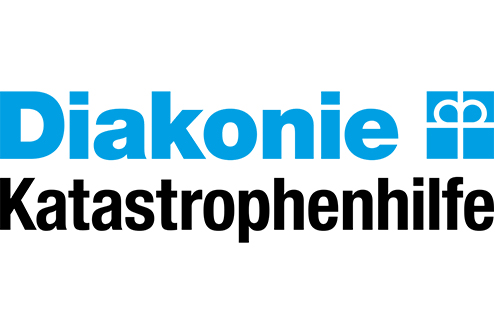Key terminology used in localising climate projections
Adaptation
The process of adjustment to actual or expected climate and its effects. Activities need to be flexible to respond to changes in the conditions, whether hazard patterns, emergence or new important actors, political, economic changes, etc.
Atmosphere
The layers of gases surrounding the earth and other planets. The earth’s atmosphere is composed of about 78 percent nitrogen, 21 percent oxygen, and one percent other gases.
Climate
Average weather over a long period of time, typically 30 years.
Climate change (from IPCC)
A change in the state of the climate that can be identified (e.g. by using statistical tests) by changes in the mean (average) and/or variability (average degree to which each number is different from the mean) of its properties and that persists for an extended period, typically decades or longer.
Climate change may be due to natural internal processes or external forcings such as modulations of the solar cycles, volcanic eruptions and persistent anthropogenic changes in the composition of the atmosphere or in land use. Note that the Framework Convention on Climate Change (UNFCCC), in its Article 1, defines climate change as: ‘a change of climate which is attributed directly or indirectly to human activity that alters the composition of the global atmosphere and which is in addition to natural climate variability observed over comparable time periods.’ The UNFCCC thus makes a distinction between climate change attributable to human activities altering the atmospheric composition and climate variability attributable to natural causes.
Climate risk management
Managing the impacts of future climate change. This includes a process of identification and understanding of climate risk and use it as an inclusive expression that designates prevention, reduction, mitigation and response.
Climate risk narrative
Descriptions of a context of events that can threaten the stability of humankind and the environment under different plausible climate futures
Downscaling
The process and methods of deriving climate information at a higher spatial resolution (i.e. a smaller geographical area) than that produced by global climate models
El Niño Southern Oscillation (ENSO)
An irregular periodic variation in winds and sea surface temperatures over the tropical eastern Pacific Ocean which affects the weather conditions across the tropics and subtropics.
Exposure
The presence – of people, livelihoods, species or ecosystems, environmental functions, services and resources, infrastructure or economic, social, or cultural assets – in places and settings that could be adversely affected by climate phenomena.
Forecast
The prediction of weather conditions for a certain place and period (typically short-term: days to months that make up a season) through scientific data and observations
Fossil fuels
Fossil fuels are made from decomposing plants and animals. These fuels are found in the Earth’s crust and contain carbon and hydrogen, which can be burned for energy. Coal, oil and natural gas are examples of fossil fuels. When these fuels are exploited from the soil as a source of energy, they increase greenhouse gases which leads to climate change.
Global Climate Model
A statistical model of atmospheric and/or oceanic processes that is able to project future conditions (typically set with a level of uncertainty but this is improving over time with new models).
Greenhouse gases
The Earth’s greenhouse gases trap heat in the atmosphere and warm the planet. The main gases responsible for the greenhouse effect include carbon dioxide, methane, nitrous oxide, and water vapour. These gases exist naturally but increase because of human activity. Fluorinated gases are man-made gases that can stay in the atmosphere for centuries.
Impact-based forecast
A forecast that provides information on what the weather will do. It is the likelihood of a particular adverse impact as a result of weather conditions, rather than a conventional weather forecast which gives an indication of what the weather will be.
Mitigation
The lessening or minimising of the adverse impacts of a hazardous event, for example the process of acting to reduce the severity of, or impacts of, climate change.
It should be noted that, in climate change policy, mitigation is also defined as the reduction of greenhouse gas emissions that are the source of climate change.
Ocean acidification
Ocean acidification reduces the amount of carbonate, a key building block in seawater. This makes it more difficult for marine organisms, such as coral and some plankton, to form their shells and skeletons. Existing shells may begin to dissolve, affecting the natural ecosystem of the ocean and lead to decreased fishing and shellfish production.
Projection
Simulations or scenarios of what future climate will look like (currently normally produced by global climate models).
Representative concentration pathways (RCP)
A RCP is a greenhouse gas concentration (not emission) trajectory. Four were used for global climate modelling and research. Different RCPs reflect the fact that future climate will depend on human behaviour and the extent of our greenhouse gas emissions.
Risk
The potential of adverse impacts on the lives and livelihoods of communities or on ecological systems, determined by the threats people face, their vulnerability and their capacity.
Risk drivers
Established and emerging threats and challenges that affect the lives, livelihoods and environment of people and continue to amplify a particular risk. They can largely be described as social (for example gender inequality, forms of discrimination), economic (for example finance instability) and governance factors (for example approaches to political systems). Natural hazards, climate change, pandemics, terrorism and transnational criminal networks, cyber fragility, geopolitical volatility and various forms of conflict are all risks in themselves as well as driving other risks to form complex or multilayered risk. Six interconnected drivers of risk are emphasised by GNDR – climate change, conflict, gender inequality, food and water insecurity, urbanisation and forced displacement.
Vulnerability
The probability to be adversely affected by risk (in the context of this guide, by exposure to climate phenomena).
Weather
The state of the atmosphere at a particular place and time (including temperature, humidity, windspeed, presence or otherwise of rain, etc.).


